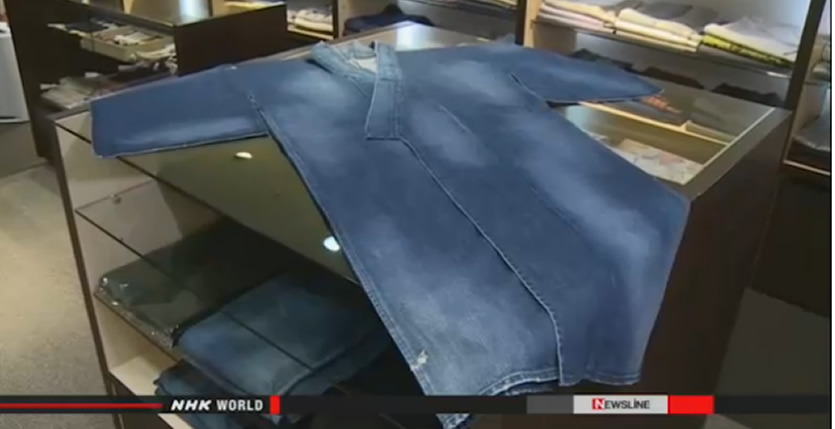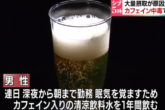Japanese jeans makers have been feeling the squeeze from cheaper imports. Now a project to twin denim with more traditional clothing may banish their blues.
A long-established kimono store in Tokyo is selling a rather untraditional type of kimono.
“I thought the material would feel stiff, but it’s very soft to the touch,” said one customer. “It’s comfortable.”
It’s highly unusual to find a kimono made of denim. In the face of declining sales, this is one style enjoying brisk demand.
Eiji Ohashi, CEO of Shinso Ohashi explained his thinking:
“We wanted to bring in people who aren’t usually interested in kimono. That’s why we used this fabric. So many people like denim.”
The fabric is made by a top denim maker in Kurashiki, Okayama Prefecture. But jeans makers have been feeling under pressure, too, in the face of cheaper imported products. Production has dropped 20 percent over the past five years.
Yasuhiro Oshima, CEO of Betty Smith described his motivation:
“In the past, we focused on sales volume – what mattered to us were the numbers. But now, creativity is important. We’re aiming to make new products that are full of character.”
Making a kimono out of denim wasn’t easy. Cotton denim is much heavier than silk. It also has to be stitched slowly and carefully, so the stitching doesn’t stretch and lose its shape.
To make denim soft, it has to be stone-washed several times. But this can cause wrinkles and leave faded patches. The company found this can be avoided by carefully ironing the fabric before it’s washed each time.
Finally, they produced a kimono that’s become very popular among both men and women. Even though they sell for over 800 dollars apiece, there’s a two-month waiting list for them.
Betty Smith’s Oshima looked to the future:
“Over the past 50 years, our company has developed many different techniques. We plan to draw on this knowhow as we take on new challenges.”
Japanese traditional design married with fabric introduced from America — the two companies are hoping this could be a key to their survival.
Source and image: NHK

















Join the Conversation